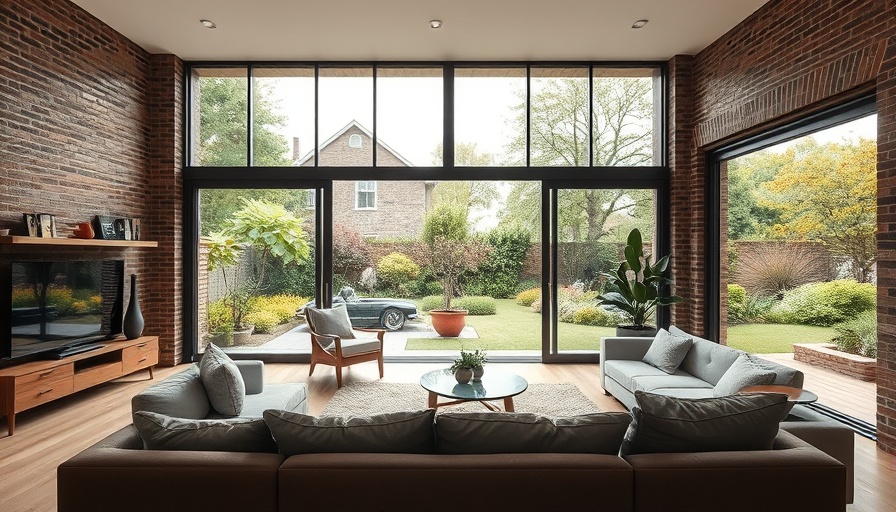
Transforming Tradition: The Outside-In Concept
The architectural renovation of the 1870s cottage in Melbourne by Stephanie Burton and Joseph Lovell is a striking example of blending modern design with traditional sensibilities. This new two-story extension, dubbed the "outside-in" design, not only illustrates innovative aesthetics but also reflects the couple's intention to harmonize their living experience with their family's future.
A Modern Solution to Spatial Challenges
Upon purchasing the modest cottage, Burton and Lovell sought a home that would grow with their family as their children transitioned into their teenage years. Their original vision faced challenges, as the small, traditional structure lacked essential features such as natural cross-ventilation, prompting the couple to create an open-concept living space that encourages family interaction while allowing for personal privacy.
Communicating Architecture: Bridging Styles
The thoughtful design of the addition ensures that the new section feels like a part of the original structure instead of an awkward donning. A breezeway connecting the two sections serves not just as a passage but also as a visual cue tying together distinct architectural styles—maintaining the old world charm of the cottage while infusing new life through expansive glass elements.
Insights from the Design Choices
One of the standout features of the new extension is its use of large pivot glass doors, blurring the lines between indoor and outdoor spaces. This integration of nature within the home is an example of biophilic design, which emphasizes the human connection to nature, thereby enhancing residents' overall well-being.
What Can Homeowners Learn from This?
Homeowners looking to renovate can take away several key lessons from Burton and Lovell's project. First, embracing a cohesive design that resonates with the existing style of a home can enhance value. Secondly, considerations of future family dynamics are crucial in planning renovations. This extension not only adds space but also flexibility for future uses, showing the importance of foresight in home design.
Local Inspiration with Global Implications
While the Lovell-Burton home is unique to Melbourne, the principles behind it are universally applicable. Homeowners everywhere can examine their living spaces, weighing the benefits of modern architecture against classic design elements. The couple’s decision to introduce Japanese-inspired aesthetics reflects a global trend where design transcends geographic boundaries, merging various cultural touchpoints.
Final Thoughts on Modern Home Design
For homeowners interested in maximizing their living space while retaining charm, Burton and Lovell’s project offers a blueprint for thoughtful renovation. This case shows how architectural ingenuity can transform the everyday into something extraordinary, enhancing both function and aesthetics in our homes.
 Add Row
Add Row  Add
Add 




Write A Comment